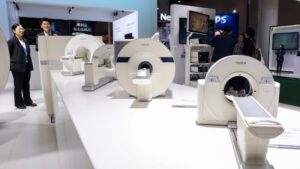The Impact of Tariffs on the Medical Device and PPE Industries: A Deep Dive
In the ever-evolving landscape of U.S. trade policy, the recent tariffs imposed by the Trump administration are having profound implications for the medical device and personal protective equipment (PPE) sectors. At Extreme Investor Network, we aim to not only inform our readers about these developments but also to delve deeper into their potential long-term effects on the industry and healthcare costs.
The Tariff Divide in the Medical Community
The medical sector is experiencing a polarization driven by tariff policies. Devices and protective gear manufactured in countries like China, Mexico, and Canada were initially exempt from tariffs, but the new set of duties has changed the game. Device manufacturers who would face steep costs due to these tariffs are now advocating for exemptions. Conversely, companies producing PPE are seeing a surge in business that could potentially come at the expense of other healthcare providers and hospitals.
Scott Whitaker, CEO of AdvaMed, aptly summed up the sentiment, stating that increasing costs due to tariffs could significantly burden taxpayer-funded programs like Medicare and Medicaid. The costs associated with these tariffs could be passed on to patients, leading to a noticeable increase in the overall cost of healthcare.
Concerns from Hospital Trade Groups
The consequences of these tariffs extend beyond manufacturers, with hospital trade organizations voicing their concerns. Rick Pollack, CEO of the American Hospital Association (AHA), has emphasized that these tariffs threaten to compromise patient care due to limited access to critical devices. The AHA continues to advocate for a tariff exemption to ensure that healthcare systems can adequately support their communities.
Pricing Complexity and Its Impacts
As tariffs increase—up to 145% on some goods from China—many hospitals and healthcare institutions find themselves squeezed financially. Unlike other industries that can pass increased costs onto consumers, hospitals often adhere to fixed contracts with insurance providers. This makes it difficult for them to adjust pricing structures in response to rising tariffs.
Casey Hite, CEO of Aeroflow Health, notes that the ramifications could lead many healthcare organizations to experience significant financial strain, making it imperative that they receive timely tariff exemptions or adjustments. The call for a "runway" for businesses to adapt to these changes has never been more critical.
A Welcome Development for PPE Manufacturers
On the flip side, U.S. manufacturers of PPE are capitalizing on the tariff landscape. Eric Axel, CEO of the American Medical Manufacturers Association, clarifies that these tariffs could level the playing field, allowing American companies to compete more effectively against subsidized Chinese goods. Companies like Altor Safety are poised to benefit from increased demand due to these tariffs, which could enhance their market share and enable cost reductions for their products over time.
Interestingly, Boston Consulting Group’s analysis reveals that approximately half of the PPE consumed in the U.S. is sourced from China, while a smaller portion comes from Canada and Mexico. The tariffs imposed under the previous and current administrations are creating a complex web for manufacturers and suppliers to navigate.
The Road Ahead: Shifting Manufacturing Trends
While Trump’s administration aimed to bolster U.S. manufacturing through tariffs, the reality may be quite different. Many multinational companies are contemplating moving their operations to other countries with lower tariffs rather than relocating to the U.S. This dilemma raises the question: can U.S. manufacturers truly benefit from these policies?
Manufacturers are now actively considering shifting production to Mexico and Canada to take advantage of potential exemptions under the U.S.-Mexico-Canada Agreement (USMCA). Notably, companies like Zimmer Biomet and Stryker, leaders in knee replacement manufacturing, operate numerous plants across North America, allowing them to maintain flexibility in their supply chains.
The Financial Toll of Tariffs on Major Players
Johnson & Johnson’s MedTech division is bracing for a staggering $400 million hit this year due to tariffs, reflecting the increasing financial pressure stemming from both foreign and domestic duties. CFO Joseph Wolk has indicated that existing contracts with healthcare providers make passing these costs on a complex challenge, further complicating the landscape for hospitals and patients alike.
CEO Joaquin Duato believes that instead of relying on tariffs as a means to strengthen domestic manufacturing, a more effective approach would involve tax policies designed to incentivize U.S. production. Johnson & Johnson is committing to investing $55 billion over the next four years in domestic manufacturing for their pharmaceuticals, showcasing a shift in strategy towards sustainability in U.S. manufacturing.
Concluding Thoughts
As the tariff saga continues, the complexities facing the medical device and PPE sectors cannot be overstated. At Extreme Investor Network, we are dedicated to bringing our readers the latest insights and analyses that not only highlight the current landscape but also equip investors and industry stakeholders with the knowledge needed to navigate the challenges and opportunities ahead. Whether you’re a healthcare provider, manufacturer, or investor, understanding the interplay of tariffs and healthcare costs will be crucial in the months and years to come. Stay tuned to our blog for more updates as this story unfolds.

